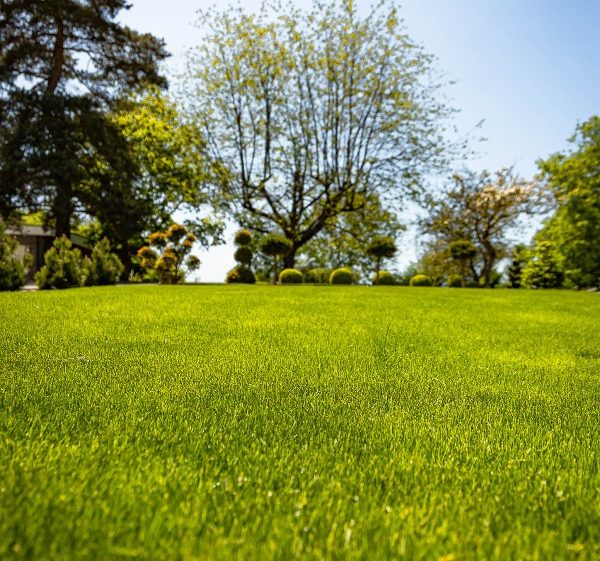- Turf
- Artificial
- Soil
- Timber
- Composite Decking
- Paving & Stone
Get In Touch With Our Experts Today!
Give us a Call! - Seed & Fertiliser
- Dressing
- Bark

July 03, 2024
As spring arrives and your garden starts to wake up, now is the time to give your lawn a little lift. And how do we do that? By scarifying! Gardeners favour this traditional lawn care task for its easy process and proven results, which deliver a healthier, brighter and long-lasting lawn.
Whether you’re new to lawn care or not, you’ve most likely heard the term ‘scarify’, and we know it needs to be done. But when is it best to scarify your turf? What time of year should you avoid scarifying, and how exactly do you scarify your lawn? Not to worry; this article tells you everything you need to know about reviving your lawn through scarifying.
Like most gardening jobs, lawn scarification is best done in springtime (April and May). This is because your lawn has already woken up and is actively growing as the weather warms. Spring also holds the best and most consistent weather conditions for scarifying; around 10°C is the ideal temperature – not too hot, and there’s still some moisture in the air.
Scarifying in Spring
Spring provides the perfect conditions for your grass to grow, and with the mix of extra sunshine and showers, your lawn is most likely rapidly growing. Once you’ve mowed your lawn three or four times, you should start scarifying. If your lawn also needs more TLC, post-scarifying is the perfect time to apply spring fertiliser.
Scarifying in Summer
We tend to avoid scarifying in extremely hot weather, as your soil can be quite fragile if low rainfall has caused dry patches. If you notice organic matter on the surface of your lawn, opt for a light tin rake to gently remove any unwanted debris and keep your turf watered throughout the summer.
Scarifying in Autumn
As we start to put your garden to bed, we recommend scarifying at the beginning of autumn, just before the temperatures dip and rainfall increases. This will give your lawn time to recover and rebuild its strength before becoming dormant for the winter. If your soil is saturated, avoid scarifying, as this will only churn up the soil.
Scarifying in Winter
It’s not recommended to scarify in the winter. The weather conditions are not ideal, and your grass is resting for the season. Basically, you’ll be wasting your time and energy. You can maintain the upkeep of your lawn by removing fallen debris, leaves, and heavy snow or applying an autumn/winter fertiliser.
Turf is tough, but young turf needs time to fully establish and build resilience against scarifying. Therefore, it is recommended to wait a couple of years before scarifying new turf. If it has been laid correctly and developed a strong root system, new turf shouldn’t need to be scarified immediately anyway.
Scarifying is when we remove organic matter, such as grass clippings, moss, or leaves, from the surface of your lawn. There are different ways to scarify, but the aim is to remove anything that could develop into thatch or block sunlight from reaching your grass.
A scarifier has a small blade that cuts through the matter, breaking it down and removing it. It also leaves shallow scores on the soil to help key nutrients reach the grass roots, ultimately allowing water, air, and sunlight to help maintain a healthy lawn.
Depending on the size of your lawn, there are different ways to scarify. Each delivers the same results; some are just faster than others! For small lawns, a garden rake will work perfectly to pile up top-surface matter to compost or remove via your garden waste.
For larger lawns or areas of grass that need extra attention, a scarifier tool would be more effective. A scarifier cuts vertically through your lawn and any thatch to leave shallow scores on the top of your soil. This doesn’t damage your grass but helps the soil receive the nutrients it needs.
If done at the wrong time of year, such as the height of summer or cold, wet winters, scarifying will not benefit your lawn. The aim of scarifying is never to damage your lawn but to rejuvenate it, helping it absorb vital nutrients to encourage stronger, healthier, brighter grass. By following our advice above, you should see the advantages of adding scarifying to your lawn care routine.
Speak To The Experts
Scarifying is an excellent part of gardening to help rejuvenate your lawn. Done correctly and at the right time of year, it can help increase your lawn’s strength, appearance, and health while reducing the risk of lawn diseases and pest infestations. Once you get on top of scarifying, it can be an enjoyable part of your lawn care schedule! If you have any more questions about scarifying turf, contact the George Davies team.
CALL US NOW ON 01234 818 253